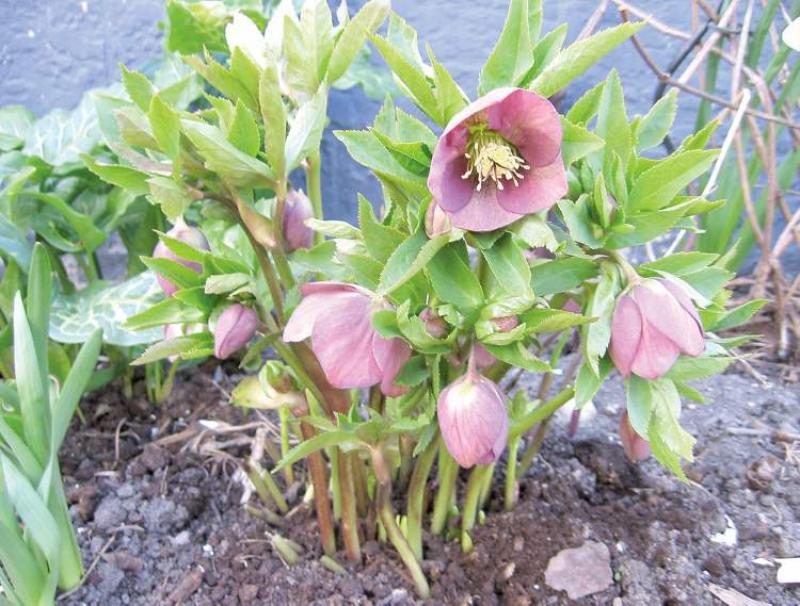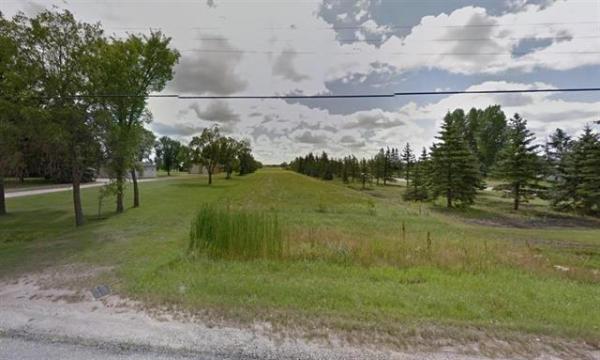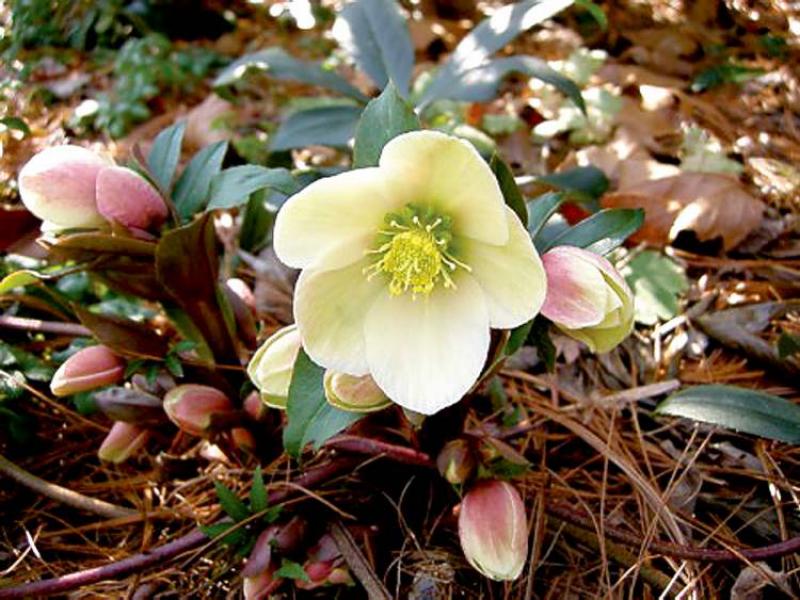
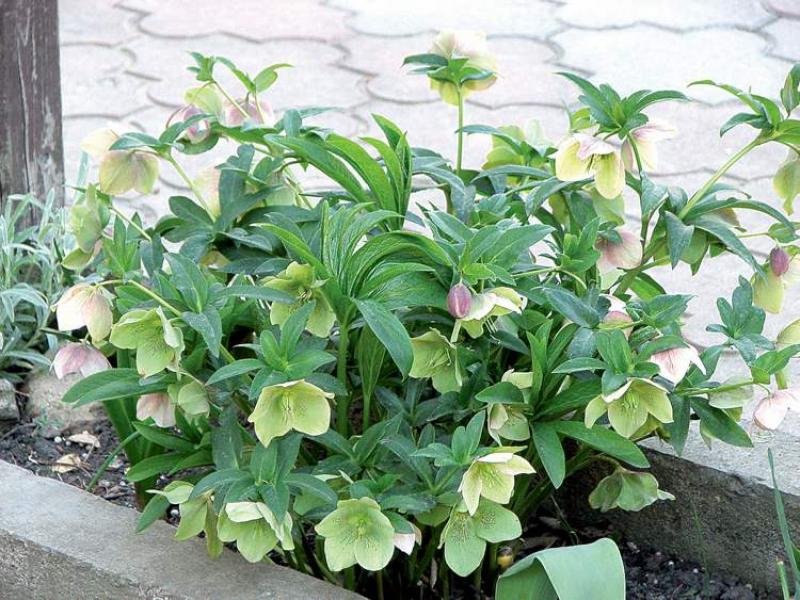
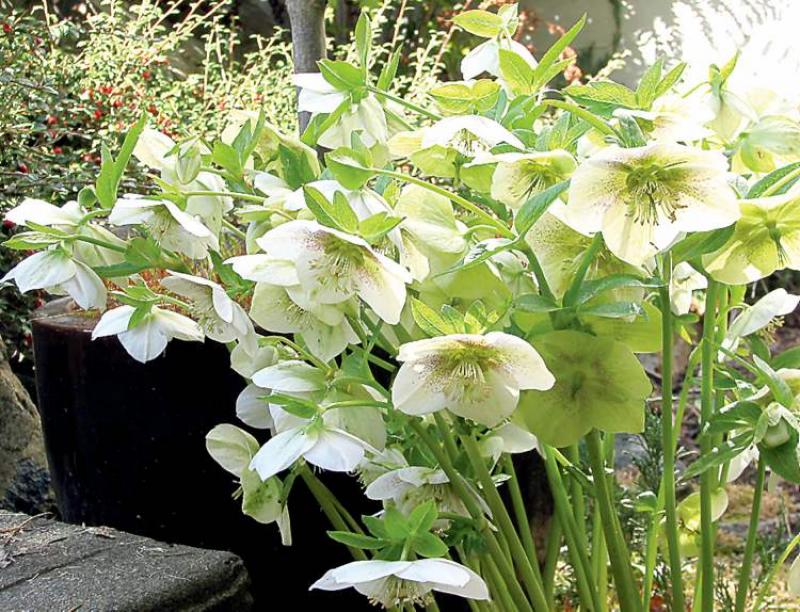
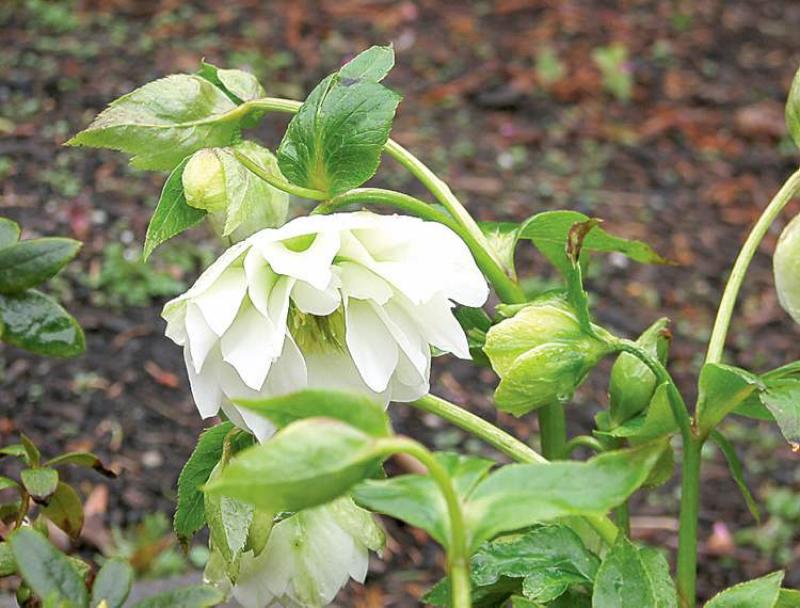
Lenten Rose
HAVE you ever visited a garden that featured plants you were completely unfamiliar with and yet so striking in their form and presentation, you felt a sense of awe at both the gardener and the garden? The presence of a lesser-known or collector plant or one that normally grows outside of our Zone 2b/3 adds interest to any garden and, even if grown singly, can give more delight than an entire flower bed of the tried and true.
Helleborus, or Lenten Rose, is an example of a plant we don't associate with a typical Manitoba garden. But that's changing, particularly with recent breeding efforts in Germany that are introducing scores of new varieties to gardeners.
The key to successfully growing any plant that is slightly outside of our growing zone is to pay attention to its requirements in terms of exposure, soil type, fertility and moisture. Most gardens have an area that can be identified as a microclimate, that is, an area that affords greater protection from the elements. So long as you are willing to provide an extra blanket of protection in the late fall, it is perfectly possible to overwinter Zone 4 plants, such as Helleborus.
Sandy Venton, today's contributor, is an associate editor of The Prairie Garden and an adventurous gardener with a stunning collection of hellebores.
Interested in adding them to your garden? Check out the Mother's Day Plant Sale tomorrow, May 13, at the Canadian Mennonite University, 500 Shaftesbury Blvd. Held indoors for the first time in 20 years, the sale, hosted by the Friends of Gardens Manitoba, will feature the Lady Series of Helleborus developed by Gisela Schmiemann of Cologne, Germany.
JOIN the St. Vital Agricultural Society on May 17 for A Gardener's Evening with special guest Jim Fuller of Top Hat Florists, who will demonstrate flower arranging: 7:30 p.m. St. Mary's Rd. United Church, 613 St. Mary's Rd. Admission is $2.
Hellebores have been growing in England for centuries. They have also been growing in Vancouver and Victoria for maybe not centuries, but certainly for decades.
Hellebores are grown in Germany and in some of the more temperate areas of the United States, but for many years it was difficult to find a hellebore growing in Winnipeg. As a matter of fact, it was downright difficult at one time to find nurseries in Manitoba that sold hellebores.
My first hellebore was a red blooming Lenten Rose Helleborus orientalis. After living in Vancouver and seeing hellebores growing in profusion, mostly the white Helleborus niger, commonly known as the Christmas Rose, I felt that acquisitive gene (that all gardeners are born with) begin to activate itself. It didn't matter that I lived and gardened in Winnipeg -- I had to have a hellebore.
The sad fate of that particular hellebore remains with me. It was planted not far from the east side of the foundation of my house, underneath a huge spruce tree which sucked up all available moisture. It barely survived, until one year it simply gave up the ghost and went to that special place where all shattered hopes and dreams associated with plants eventually end up: the compost bin.
It wasn't the hellebore's fault -- it was mine.
Undaunted, I purchased more unnamed hellebores in pink and blue shades, as well as doubles and named cultivars and potted them in flower pots where they rewarded me with blooms.
I didn't have a great spot in which to plant them so moved them in their pots to the bottom of the garden in the late fall and covered them with peat moss. They were not only alive and well the following spring, but were in bud and starting to flower!
Since hellebores prefer a shady location in fertile, rich, well-drained loamy soil, I transplanted them immediately in a north-facing spot in my garden that generally stayed cold and damp all summer. They continued to flower and the next spring, came up again. The hellebore gods smiled down on me and life was good -- right up until the day the north-facing bed had to be dug up to make room for a new garage.
Hellebores, similar to peonies, resent being moved. I dug them out carefully, keeping as much soil around the root ball as possible, put them into pots and buried them for another winter under peat moss. The following spring they were resuscitated once more and planted in a newly created shade bed together with companion plants that included hostas, ferns, corydalis, primula, astrantia, actea and martagon lilies.
Fortunately, they thrived in their new home. They don't mind frosts and snow, as they are pretty much the first perennials to appear in the spring.
Hellebores are offered in varying shades of white, cream, pale pink, rosy pink, rosy red, indigo, purple, yellow, and pale colours with varying coloured spots, as well as doubles (extra petals). Planted in the proper location, I have no doubt they will all thrive and flower for those lucky enough to acquire them. Most hellebores are hybrids of various species, and some are hardier than others.
That being said, most hellebores are hardy to Zone 4. Our growing zone, previously known as zone 3, is now called zone 2b. Our past winter was very mild with very little snow cover, and although I was certain the hellebores would have a tough time, they all came through with flying colours. Mulch well in the fall with leaves or flax straw for added winter protection.
Hellebore seed isn't readily available. Suitable conditions are required to break dormancy and induce germination -- sometimes exposure to cold or light or scarification. If you do have hellebores growing in your garden, and you don't cut off the spent flowers, chances are you will end up with little hellebore seedlings around the parent plant. Allow these to grow for a few summers until they get large enough to bear flowers, and it is at that time you can choose to either keep them or distribute them among your friends, who will probably love you forever.
Hellebores belong to the family Ranunculaceae, as do clematis, delphinium, anemones, and buttercups. Be advised they are toxic if eaten -- certainly rabbits and deer avoid them. The flowers have five sepals which surround the nectaries (petals modified to hold nectar).
As the petals are actually sepals, they remain on the plant for many months, although they will ultimately lose their colour -- but not their charm. The dark, olive green leaves are fairly stiff and somewhat prickly.
I plan to add a yellow-coloured hellebore to my garden this year. They are all beautiful, and the best part is the flowers remain on the plant all summer. They will turn a greenish shade, but they will still be there.

